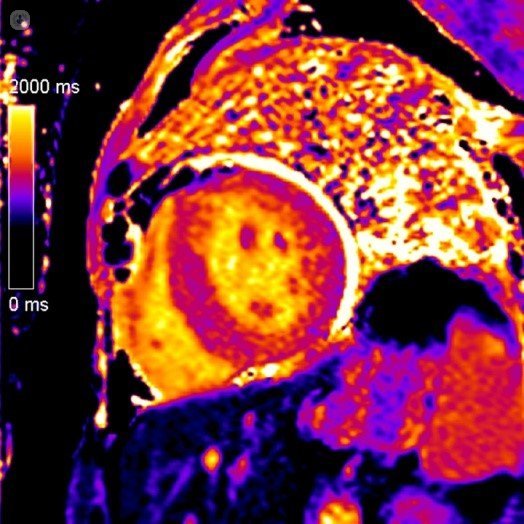T1 Technology Mapping for fibrosis in the heart
Written by:Most heart ailments have in common that, as they progress and progress, they tend to fibrosis or hardening of the heart. It is also known that, the more fibrosis, the worse the prognosis. The princeps diagnostic method for the detection and quantification of fibrosis in cardiology is usually cardiac biopsy or taking a sample of cardiac tissue, but it is a highly invasive procedure and not free of serious complications.
Magnetic resonance imaging in the diagnosis of fibrosis
Cardiac magnetic resonance imaging has been postulated as the imaging technique that can best diagnose the presence and quantify the degree of cardiac fibrosis non-invasively.
After the administration of a small dose of contrast, cardiac magnetic resonance is able to detect its accumulation in areas of fibrosis, necrosis (infarction) or infiltration by heart disease.
T1 Mapping technology to detect fibrosis
 In recent years, a new technique of magnetic resonance imaging, known as T1 mapping. With this novel technology, it is possible to detect even areas of cardiac fibrosis that have not yet produced obvious structural damage and, most importantly, allow quantification of the degree of fibrosis. This is of great importance in future follow-up, in order to be able to follow the evolution of heart ailments.
In recent years, a new technique of magnetic resonance imaging, known as T1 mapping. With this novel technology, it is possible to detect even areas of cardiac fibrosis that have not yet produced obvious structural damage and, most importantly, allow quantification of the degree of fibrosis. This is of great importance in future follow-up, in order to be able to follow the evolution of heart ailments.
At the practical level, this technology does not add more exploration time in a standard cardiac study. Simply by means of a complex mathematical process a map of the heart in color is obtained where the zones of fibrosis are emphasized with respect to the healthy zones. With the result of a small sample of blood (hematocrit) and through a rapid analysis process in the post-processing systems, quantitative information on the fibrosis of the heart is obtained.


